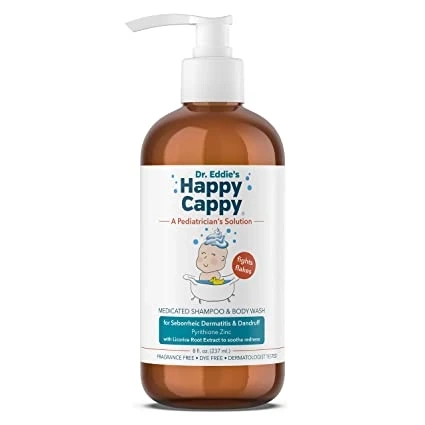When it comes to scalp issues, lice and dandruff are two common problems that can cause discomfort and embarrassment. While they may share similarities in terms of symptoms, such as itchiness and flaking, lice and dandruff are distinct conditions with different causes and treatments. In this comprehensive guide, we will explore the key differences between lice and dandruff, delve into their respective causes, symptoms, and explore effective treatment options. So, let’s dive in and understand the battle of lice vs dandruff!
Lice vs Dandruff: A Closer Look
What is Lice?
Lice are parasitic insects that infest the scalp, attaching their eggs (nits) to the hair shafts. These tiny creatures feed on human blood, causing intense itching and discomfort. Lice are highly contagious and can spread rapidly through close personal contact or sharing personal items such as combs, hats, or pillows.
What is Dandruff?
Dandruff, on the other hand, is a common scalp condition characterized by the shedding of dead skin cells from the scalp. It often leads to the formation of white or yellow flakes that can be visible on the hair and shoulders. Dandruff is not contagious and is usually caused by an overgrowth of a yeast-like fungus called Malassezia.
Causes of Lice and Dandruff
Causes of Lice
Lice infestations are primarily caused by the transfer of lice from one person to another. The most common sources of lice infestations include:
Direct head-to-head contact: This is the most common way lice are spread, particularly among children. Close contact during activities such as hugging, playing, or sleeping together allows lice to crawl from one person’s hair to another.
Sharing personal items: Sharing personal items such as combs, brushes, hats, helmets, or bedding can facilitate the transfer of lice.
Causes of Dandruff
Dandruff, as mentioned earlier, is primarily caused by an overgrowth of the fungus Malassezia on the scalp. Several factors can contribute to the development of dandruff, including:
Oily scalp: Excessive oil production on the scalp provides an ideal environment for the growth of Malassezia, leading to dandruff formation.
Dry skin: Dry skin can cause flaking and increased shedding of dead skin cells, resulting in dandruff.
Symptoms of Lice and Dandruff
Symptoms of Lice
Common symptoms of lice infestations include:
Intense scalp itching: Lice bites can cause severe itching, which is often worse behind the ears and at the back of the neck.
Visible nits or lice: The presence of nits or adult lice on the scalp or hair is a clear sign of infestation. Nits are tiny yellow, tan, or brown eggs attached to the hair shafts, while lice are small, wingless insects.
Symptoms of Dandruff
Dandruff is characterized by the following symptoms:
White or yellow flakes: The most noticeable symptom of dandruff is the presence of white or yellow flakes on the scalp and hair.
Itchy scalp: Dandruff can cause mild to moderate itching, which is usually less intense than the itching caused by lice.
Treating Lice and Dandruff
Treating Lice
To effectively treat lice infestations, it is crucial to take a comprehensive approach. The following steps can help eliminate lice:
Use over-the-counter (OTC) treatments: Happy Cappy Dandruff shampoos is the best (OTC) shampoo and treatments available that contain insecticides to kill lice. Follow the instructions carefully and repeat the treatment as recommended.
Remove nits: After applying the treatment, use a fine-toothed comb to remove nits from the hair shafts. This process may need to be repeated over several days to ensure all nits are removed.
Wash personal items: To prevent reinfestation, wash or dry-clean any clothing, bedding, or personal items that may have come into contact with lice.
Treating Dandruff
Managing dandruff requires a consistent hair care routine and addressing the underlying causes. Consider the following strategies for dandruff treatment:
Use Happy Cappy medicated shampoos: Look for shampoos containing active ingredients like ketoconazole, selenium sulfide, or pyrithione zinc, which are effective in reducing the growth of Malassezia and controlling dandruff.
Practice good hair hygiene: Regularly wash your hair with a mild shampoo to keep your scalp clean and free from excess oil and dead skin cells.
Avoid triggers: Identify any triggers that worsen your dandruff, such as stress or certain hair products, and try to minimize their impact.
Frequently Asked Questions
Q: Can lice survive on pets or furniture?
A: No, lice are specialized parasites that require human blood to survive. They cannot survive on pets or furniture.
Q: Can dandruff be cured permanently?
A: While dandruff cannot be cured permanently, it can be effectively managed with proper hair care and treatment.
Q: Can dandruff cause hair loss?
A: Dandruff itself does not directly cause hair loss. However, persistent scratching and inflammation of the scalp can contribute to hair breakage.
Q: Are lice a sign of poor hygiene?
A: No, lice infestations are not related to personal hygiene. Lice can infest anyone, regardless of their cleanliness.
Q: Can lice jump or fly?
A: No, lice cannot jump or fly. They crawl from one hair strand to another.
Q: Can dandruff affect facial hair?
A: Yes, dandruff can affect facial hair, leading to itchiness and flaking in the beard area. Specialized shampoos and treatments are available for beard dandruff.
Conclusion
In conclusion, lice and dandruff may share similar symptoms, but they are distinct conditions with different causes and treatments. Lice are parasitic insects that infest the scalp and require specialized treatment to eliminate them. On the other hand, dandruff is a common scalp condition caused by an overgrowth of a fungus and can be effectively managed with proper hair care and medicated shampoos. By understanding the differences between lice and dandruff, you can take appropriate steps to address and treat these conditions effectively.
Remember, if you suspect a lice infestation or are struggling with persistent dandruff, consulting a healthcare professional or dermatologist can provide personalized guidance and treatment options.



